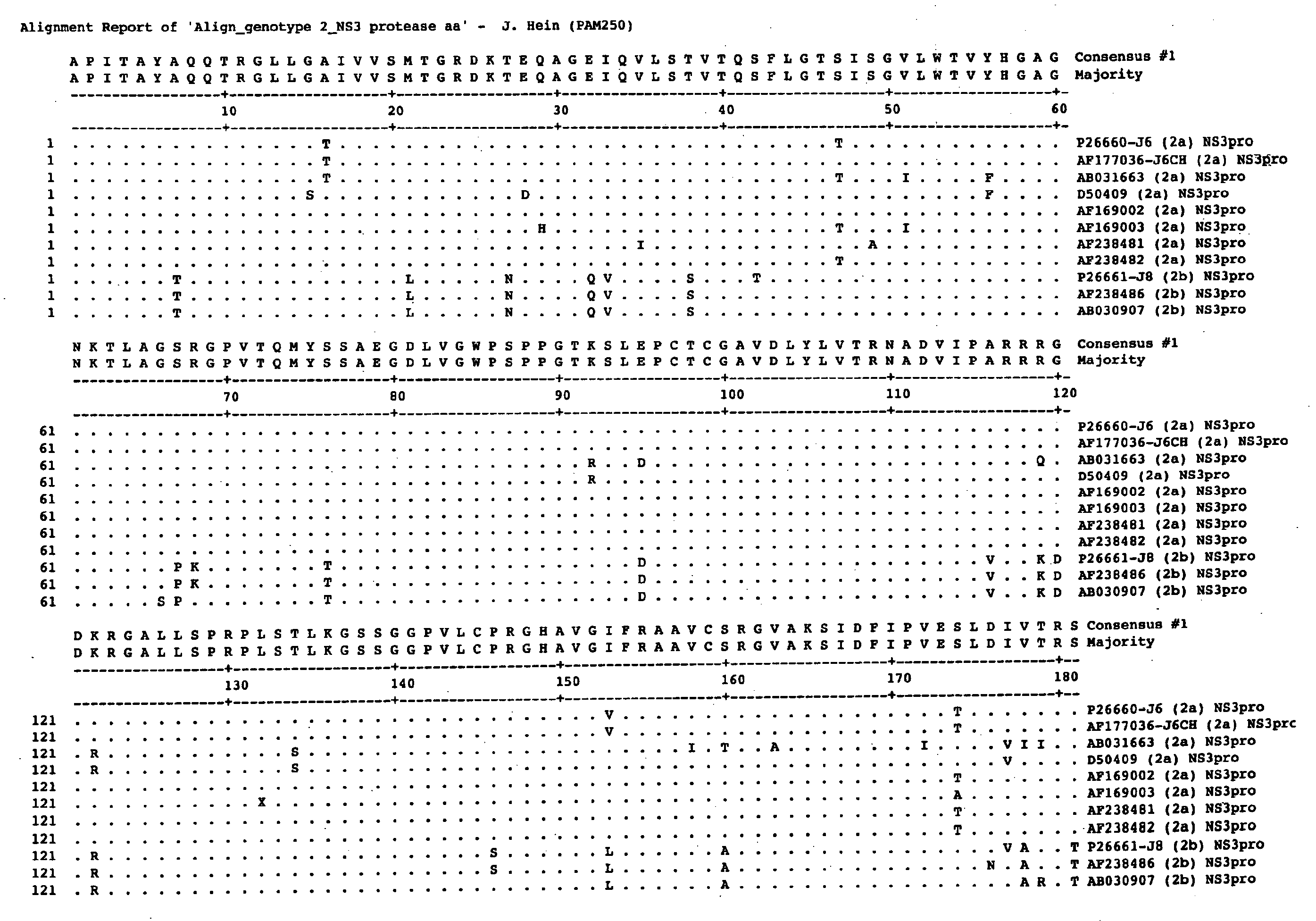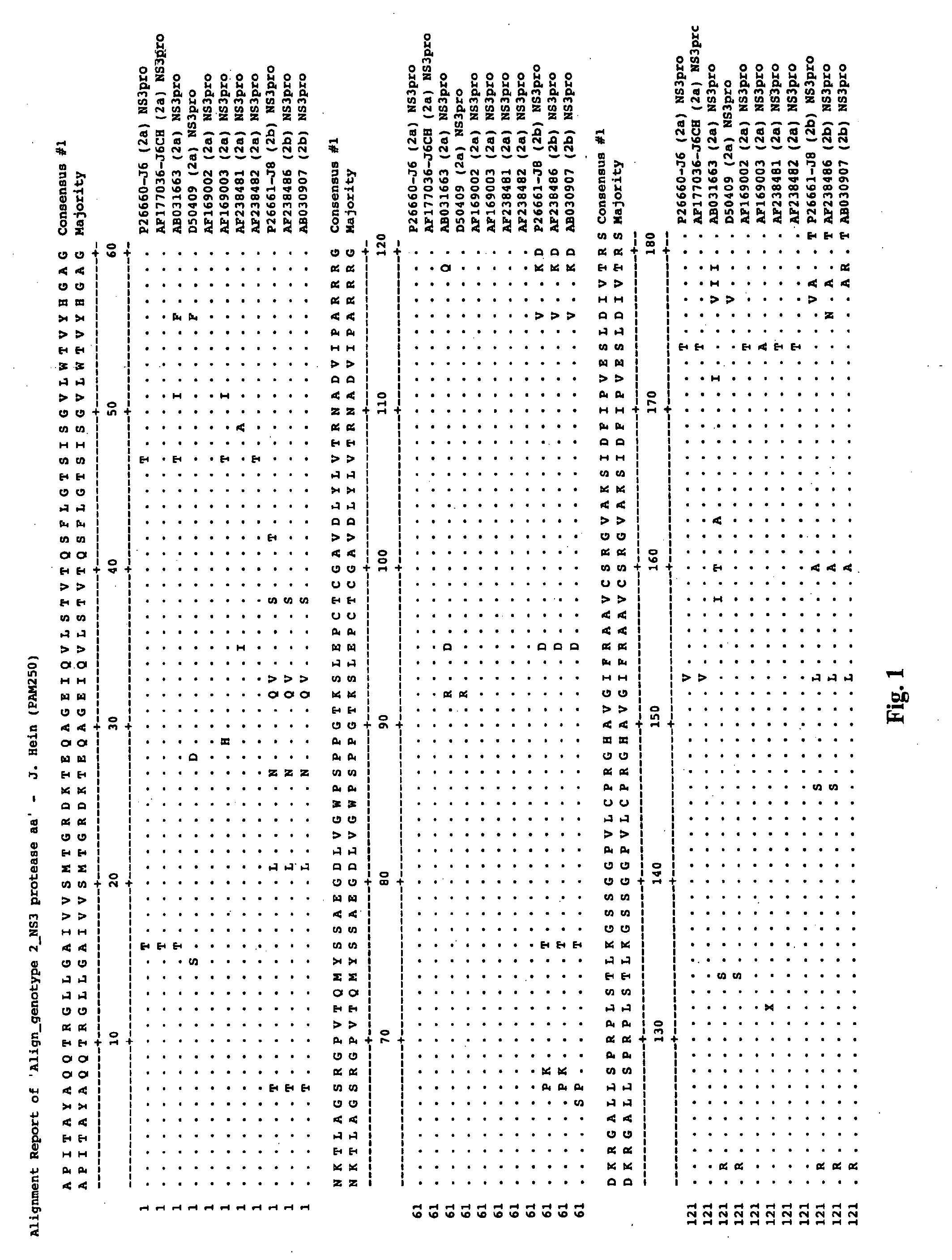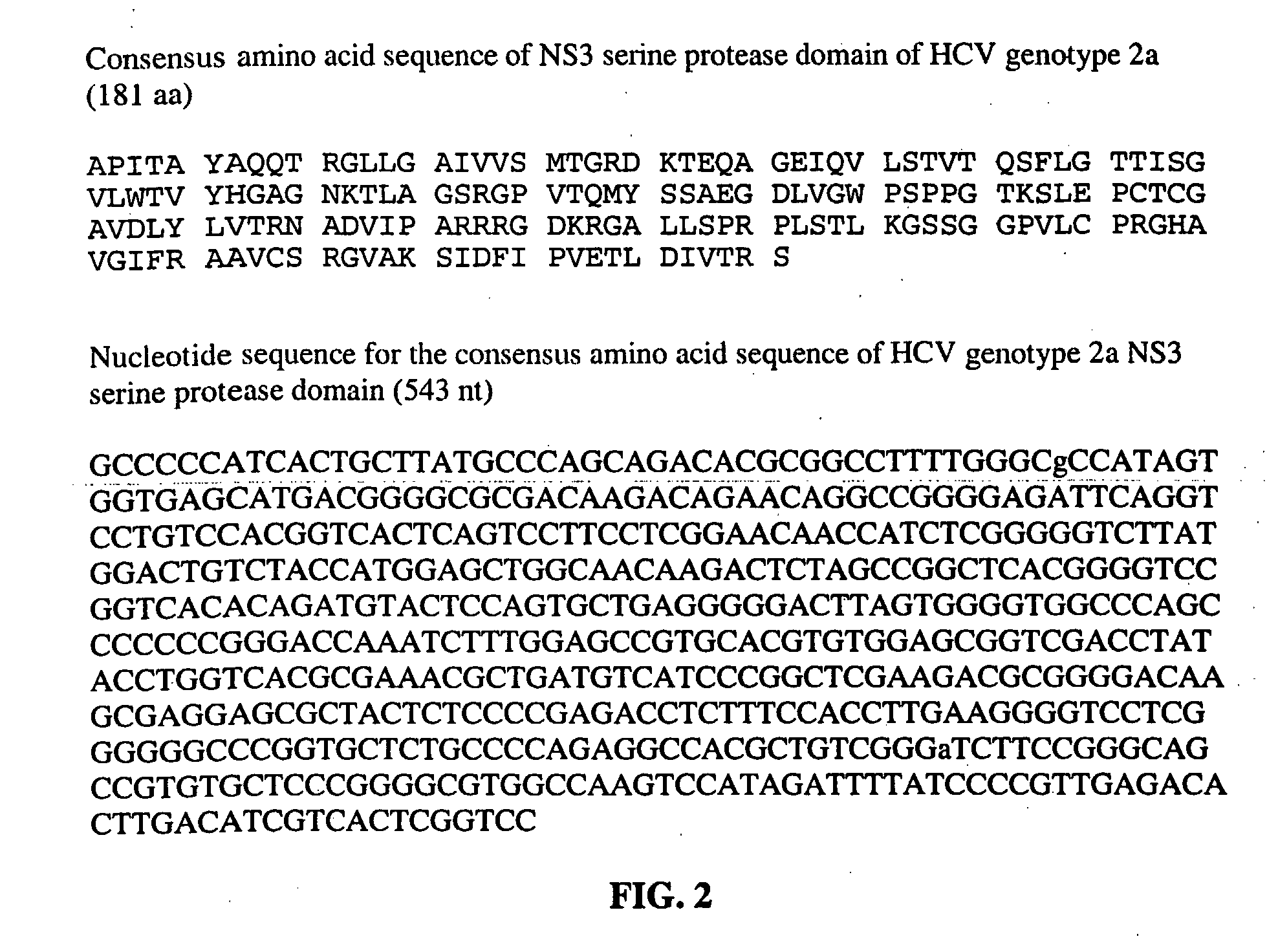Hcv Ns3-Ns4a Protease Inhibition
- Summary
- Abstract
- Description
- Claims
- Application Information
AI Technical Summary
Benefits of technology
Problems solved by technology
Method used
Image
Examples
example 1
HCV NS3 Protease HPLC Peptide Cleavage Assay
[0095]This assay is a modification of that described by Landro et al. [Landro J. A. et al., Biochemistry, 36, pp. 9340-9348 (1997)]. A single peptide substrate (NS5AB) based on the NS5A / NS5B cleavage site for genotype 1a HCV, was used with all proteases. The substrate stock solution (25 mM) was prepared in DMSO containing 0.2M DTT and stored at −20° C. A synthetic peptide cofactor (KK4A) appropriate to each genotype was used as a substitute for the central core region of NS4A. Peptide sequences are shown below. The hydrolysis reaction was performed in a 96-well microtiter plate format using 25 nM to 50 nM HCV NS3 protease in buffer containing 50 mM HEPES pH 7.8, 100 mM NaCl, 20% glycerol, 5 mM DTT and 25 μM KK4A. The final DMSO concentration was no greater than 2% v / v. The reactions were quenched by the addition of 10% trifluoroacetic acid (TFA) to yield a final TFA concentration of 2.5%. Enzymatic activity was assessed by separation of su...
example 2
Determination of Potency in HPLC Peptide Cleavage Assay
[0097]For evaluation of apparent Ki values, all components except the test compound and substrate were pre-incubated for 5 minutes at room temperature. Then, test compound, dissolved in DMSO, was added to the mixture and incubated for 15 minutes at room temperature. The cleavage reaction was initiated by the addition of NS5AB peptide at a concentration equal to Km (11 μM to 70 μM) and incubated at 30° C. for fifteen minutes. Seven to eight concentrations of compound were used to titrate enzyme activity for inhibition. Activity vs. inhibitor concentration data points were fit to the Morrison equation describing competitive tight-binding enzyme inhibition using non-linear regression [Sculley, M. J. and Morrison, J. F., Biochim. Biophys. Acta. 874, pp. 44-53 (1986)].
Apparent Inhibition Constants for VX-950 withHCV NS3 Protease using Peptide Cleavage AssayGenotypeKi apparent (nM)1a442a403a650
example 3
HCV NS3 Protease Fluorescence Peptide Assays
[0098]Enzymatic activity was determined using a modification of the assay described by Taliani et al. [Taliani M. et al., Anal. Biochem., 240, pp. 60-67 (1997)]. All reactions were performed in a buffer containing 50 mM HEPES pH 7.8, 100 mM NaCl, 20% glycerol, 5 mM DTT and 25 μM KK4A (Buffer A), using the RET-S1 fluorescent peptide (AnaSpec, San Jose, Calif.) as substrate. Final DMSO concentrations were maintained at 1-2% (v / v). Unless otherwise noted, reactions were continuously monitored in a fluorescence microtitre plate reader thermostatted at 30° C., with excitation and emission filters of 355 nm and 495 nm, respectively.
[0099]For determination of the kinetic parameters Km and Vmax, the RET-S1 substrate was varied between 6 μM and 200 μM in Buffer A and allowed to react with 5 nM to 10 nM HCV NS3 protease for 5 to 10 minutes. The reactions were quenched by the addition of 25 μL 10% trifluoroacetic acid (TFA). Enzymatic activity was as...
PUM
| Property | Measurement | Unit |
|---|---|---|
| Molar density | aaaaa | aaaaa |
| Molar density | aaaaa | aaaaa |
| Molar density | aaaaa | aaaaa |
Abstract
Description
Claims
Application Information
 Login to View More
Login to View More - R&D
- Intellectual Property
- Life Sciences
- Materials
- Tech Scout
- Unparalleled Data Quality
- Higher Quality Content
- 60% Fewer Hallucinations
Browse by: Latest US Patents, China's latest patents, Technical Efficacy Thesaurus, Application Domain, Technology Topic, Popular Technical Reports.
© 2025 PatSnap. All rights reserved.Legal|Privacy policy|Modern Slavery Act Transparency Statement|Sitemap|About US| Contact US: help@patsnap.com



